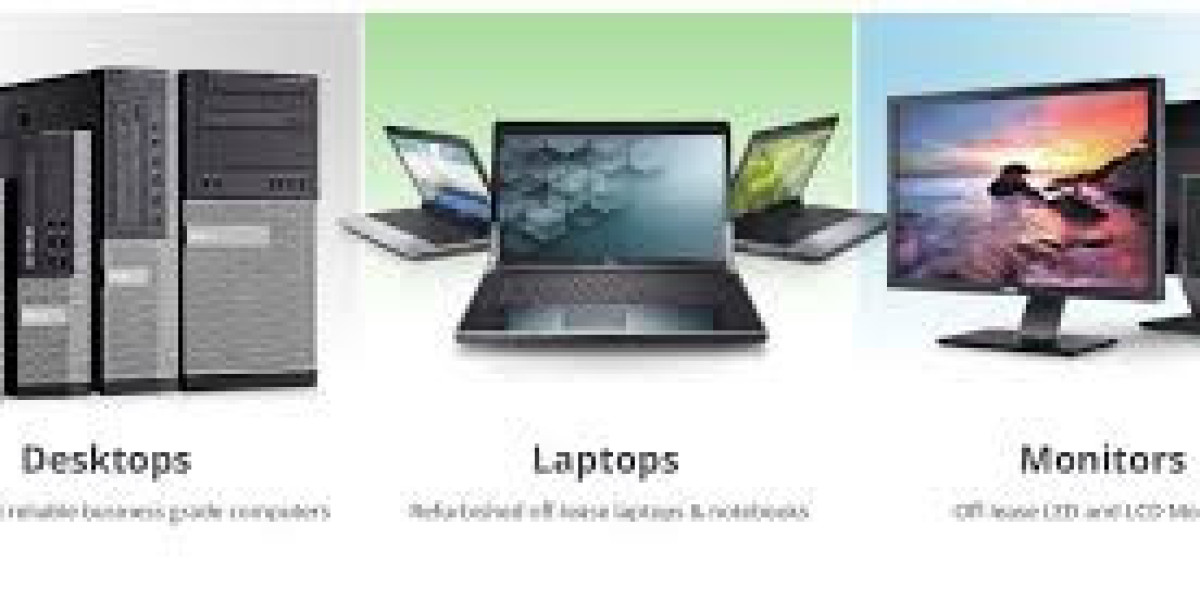In an age of rapid technological obsolescence and mounting electronic waste (e-waste), the Refurbished Computers and Laptops Market is emerging as a critical engine for sustainable and affordable digital access. Consumers and businesses worldwide are increasingly recognizing the economic and environmental logic of extending the life of high-quality devices.
This shift is driving remarkable market expansion. Valued at US$ 5,950.5 Million (US$ 5.95 Billion) in 2024, the global refurbished computers and laptops industry is projected to achieve a strong Compound Annual Growth Rate (CAGR) of 9.7% from 2025 to 2035. This sustained growth will nearly triple the market's size, pushing its total value to an estimated US$ 16,293.2 Million (US$ 16.3 Billion) by the end of 2035.
The Drivers: Affordability Meets Sustainability
The powerful growth rate is sustained by a perfect storm of economic necessity, environmental consciousness, and expanding digital access:
1. The Cost-Effectiveness Imperative
The primary driver remains affordability. Refurbished devices offer high-quality computing power at a significant discount (often 30% to 50% less) compared to new models. This makes them the ideal choice for several key user segments:
Small and Medium Enterprises (SMEs): Startups and growing businesses use refurbished fleet purchases to manage IT budgets effectively without compromising performance.
Educational Institutions: Schools and universities, particularly in emerging markets, leverage these devices to equip students and bridge the digital divide affordably.
Price-Conscious Consumers: Individuals, especially those seeking secondary devices for remote work or e-learning, are drawn to the value proposition.
2. The Circular Economy and E-Waste Awareness
Globally, e-waste is one of the fastest-growing waste streams. This mounting environmental crisis has intensified consumer and corporate focus on the Circular Economy, making refurbishment a preferred sustainable practice.
Carbon Footprint Reduction: Choosing a refurbished laptop significantly reduces the carbon emissions associated with the mining of raw materials and the energy-intensive manufacturing process of a brand-new device.
Corporate Sustainability Mandates: Many large enterprises are incorporating refurbished IT asset adoption into their sustainability and ESG (Environmental, Social, and Governance) goals, driving demand in the crucial Business-to-Business (B2B) segment.
3. Improved Quality Assurance and Trust
One of the biggest historical barriers—consumer skepticism about quality—is rapidly being overcome.
Certified Refurbishment: Major Original Equipment Manufacturers (OEMs) like Apple, Dell, and HP, alongside leading e-commerce platforms (e.g., Amazon Renewed), now offer certified refurbishment programs. These programs include rigorous diagnostics, component replacements, and comprehensive warranties, bolstering consumer confidence and reliability.
E-commerce Dominance: The expansion of dedicated online marketplaces provides transparent grading systems and customer reviews, making the purchasing process convenient and trustworthy.
Segmentation: Laptops Lead the Charge
While both computers and laptops contribute to market growth, refurbished laptops are expected to maintain market dominance, driven by the persistent global trends of remote work, hybrid learning, and the general preference for mobile computing devices.
The key End-User segments driving future demand are:
| End-User Segment | Core Driver for Refurbished Adoption |
| Educational Institutes | Affordability in mass deployment; bridging the digital access gap. |
| Enterprises (B2B) | Cost savings, corporate sustainability goals, and extending IT refresh cycles. |
| Individual Consumers (B2C) | Personal budget consciousness and environmental awareness. |
Outlook 2035: Standardization and Global Reach
The journey to US$16.3 Billion will be marked by increased professionalization and standardization across the industry.
Standardized Grading: The need for universal, transparent grading standards (e.g., Grade A, B, C) will become crucial to reduce consumer confusion and enhance international trade.
Partnerships: OEM and third-party refurbisher collaborations will deepen, ensuring a steady, high-quality supply of returned and leased equipment for refurbishment.
Emerging Markets: Regions like Asia-Pacific, Latin America, and Africa—where demand for affordable, functional technology is highest—will be the key high-growth areas.
The refurbished computers and laptops market is clearly positioned as a fundamental solution to both economic accessibility and environmental responsibility in the digital age. It’s not just about selling old devices; it’s about creating a more sustainable and inclusive technological future.








